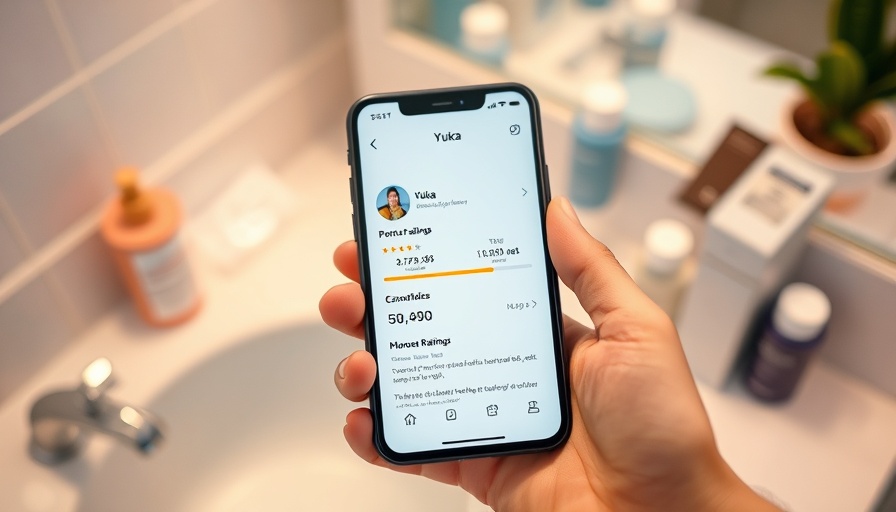
Transforming Beauty Standards: The Rise of Yuka
With over 20 million users in the U.S. alone, the Yuka app has taken the beauty industry by storm since its introduction in 2017. This innovative tool allows conscientious consumers to scan product labels, revealing a score based on the safety and quality of ingredients, effectively promoting a culture of transparency. However, as its popularity skyrockets, concerns regarding the accuracy and implications of its ratings are surfacing.
How Yuka Works: Transparency Meets Technology
Yuka’s rating system assigns scores from zero to 100 based on an evaluation of the ingredients. Products scoring between 75 and 100 are labeled as excellent, while those below 50 are deemed poor. Ingredients deemed hazardous are marked with a striking red dot, serving to alarm users about potential risks. Yet, beauty insiders argue that this simplistic method of grading can create undue panic, particularly concerning ingredients that have been traditionally viewed as safe.
Navigating Misconceptions: What Users Should Know
Despite its good intentions, some experts caution that Yuka may mislead consumers, as not all ingredients are understood in the same way by scientific standards. For example, the app’s criteria for classification heavily rely on evaluations from global health organizations. While some ingredients might be flagged as harmful, experts like Jeannie Jarnot, founder of Beauty Heroes, emphasize the importance of looking beyond ingredient labels to understand the overall efficacy of a product. Customers are encouraged to adopt a holistic view of their choices, rather than solely relying on app ratings.
The Future of Clean Beauty: Industry Changes Ahead?
As apps like Yuka gain traction, the beauty industry may need to adapt accordingly. Even though consumer awareness of ingredient safety is vital, brand founders and product developers are considering how to balance transparency with the scientific complexity of products. Suggestions include enhancing education about ingredient safety and fostering open discussions between brands and consumers. This delicate interplay between consumer demand for transparency and brand advocacy calls for a nuanced understanding of product ingredient implications.
Embracing Responsible Choices: A Collective Responsibility
The rise of Yuka is emblematic of a larger trend towards conscious consumerism that resonates particularly well among women 35+. This demographic, increasingly wary of potentially harmful ingredients, is advocating for safer beauty products. By fostering ingredient awareness, Yuka and other similar platforms are empowering individuals to make informed decisions—an invaluable step towards promoting health and sustainability in beauty practices.
In Conclusion: Take Action Towards Informed Beauty Choices
The discussions surrounding Yuka and its effects highlight an essential moment in the beauty industry, where consumers are taking the reins of product accountability. By engaging with apps that promote ingredient awareness, consumers contribute to a demand for transparency and healthier products. As the beauty landscape evolves, these conversations can help steer both personal choices and industry practices towards a more responsible future.
 Add Row
Add Row  Add
Add 




 Add Row
Add Row  Add
Add 

Write A Comment